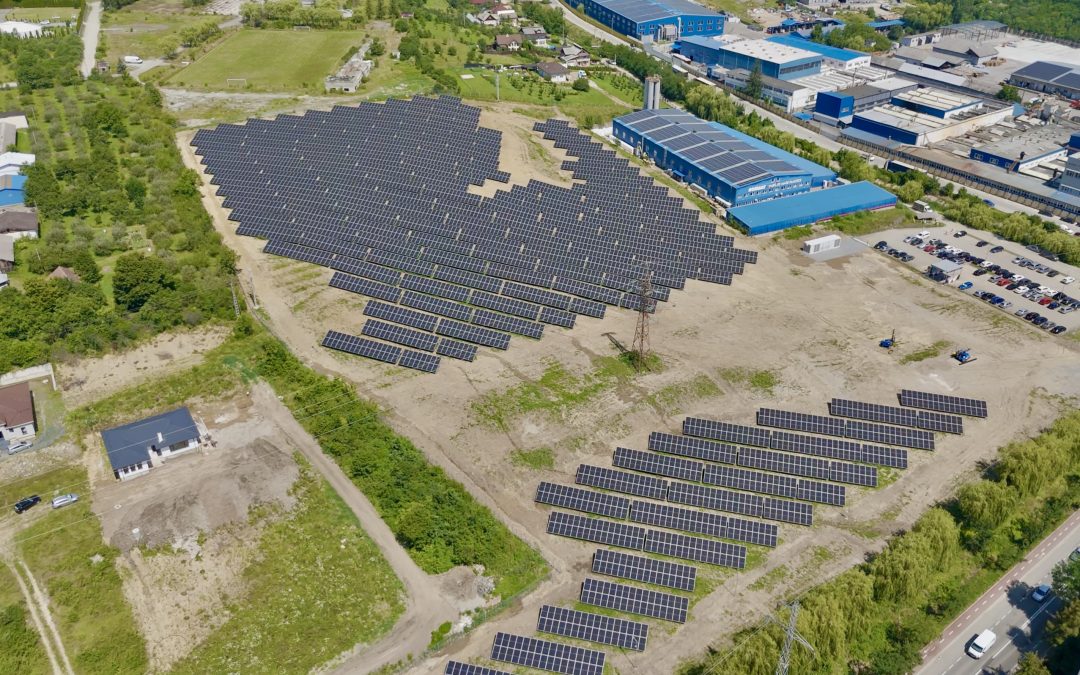Context and Current Status
Europe stands at a critical juncture in its industrial trajectory. Despite world-class engineering and environmental leadership, its competitiveness is under pressure. High energy prices, fragmented capital markets, regulatory burdens, and limited investment in emerging technologies have widened the gap between the EU and major global players like the United States and China. With initiatives like the Clean Industrial Deal and recommendations from the Draghi Report, there is now a clearer roadmap for action: align climate goals with a strong, coordinated industrial strategy, simplify regulation, and invest in innovation.
Energy prices remain a key challenge. In early 2024, household electricity prices in Italy and Ireland reached $0.43 and $0.41 per kWh respectively, compared to $0.18 in the US and just $0.08 in China. [1] Industrial electricity costs follow a similar pattern, as can be seen in the below graph, [2] placing European manufacturers at a disadvantage and even prompting some to consider relocation,

Figure 1. Ratios of industrial retail electricity prices in global markets (European Commission estimations).
(A ratio of more than 1 means that EU prices are higher than those of the corresponding non-EU country)
The Clean Industrial Deal, launched in February 2025, aims to address these pressures by promoting renewable energy deployment and grid upgrades to reduce costs and strengthen long-term resilience.
Energy Crisis as a Turning Point
The 2022 energy crisis, triggered by Russia’s invasion of Ukraine, exposed Europe’s deep reliance on imported fossil fuels. Gas price spikes shook the industrial base and revealed a structural weakness in the EU model. Since then, diversification of supply has improved, but true resilience depends on going further: reducing fossil dependency, boosting energy efficiency, and accelerating investment in stable low-carbon energy sources — from grid-connected renewables to next-gen nuclear and geothermal.
Electrification must be central — not just as a climate strategy, but as a core pillar of economic competitiveness. Some industries may need to relocate within the EU to areas where clean, affordable power is more accessible. Rather than resisting this transition, the EU should manage it strategically, supporting regions and workers through policy, retraining, and investment.
Europe at a Crossroads
The world’s industrial powers are choosing divergent paths. The US is doubling down on fossil fuels, reasserting itself as a petro-state. China is moving in the opposite direction — building what many now call an electro-state, electrifying its economy through massive investment in clean tech. Europe cannot out-drill the US or outscale China, but it can leverage its own strengths: a skilled workforce, leading research institutions, and strong public support for climate action.
The EU’s Clean Industrial Act reflects a strategic shift. While the Green Deal was rooted in environmental ambition, the new Act reframes the green transition through the lens of industrial competitiveness. It keeps the path of decarbonization but adds a clear focus: ensuring Europe’s green transition also supports growth, jobs, and sovereignty. It is supported by the Affordable Energy Action Plan, which introduces concrete steps to reduce energy costs and boost clean power adoption. These include investments in storage capacities, new electricity tariffs for flexible consumption, decoupling electricity prices from gas markets, streamlining permitting for renewables, and investing in grid modernization. A dedicated Electrification Action Plan, expected in 2026, will focus on transforming industry, heating, and transport. [3] As part of the Affordable Energy Action Plan, the EU also aims to expand the use of Power Purchase Agreements (PPAs) to provide industries with stable, long-term access to renewable electricity [4].
Shared Goals, Local Paths
A unified EU energy strategy is increasingly necessary. The crisis showed how deeply interconnected member states are, and how damaging fragmentation can be. Shared direction on decarbonization, resilience, and infrastructure will help prevent future shocks. But national differences remain — from France’s nuclear reliance to Germany’s push for hydrogen and the coal dependency of others.
The answer may lie in a flexible approach: one shared destination, with many paths to reach it. The EU can set the framework, while allowing member states to adapt based on their resources and political realities.
Conclusions
Europe’s energy challenge is also its opportunity. The Clean Industrial Act, combined with strategic electrification and energy reform, offers a path forward. Success will depend on speed, cohesion, and bold investment. In this new energy-industrial era, Europe must go beyond setting standards — it must create value, ensuring its industry is not only green and resilient, but globally competitive.
References:
- Statista (2024). Electricity prices for households in selected countries worldwide (USD/kWh).https://www.statista.com/statistics/263492/electricity-prices-in-selected-count
- International Energy Agency (IEA) (2024). Electricity 2024 – Global market trends and pricing outlook. https://www.iea.org/reports/electricity-2024
- Comisia Europeană (2025). Clean Industrial Deal – o nouă strategie pentru competitivitatea europeană.
https://commission.europa.eu/topics/eu-competitiveness/clean-industrial-deal_en - Comisia Europeană (2025). Affordable Energy Action Plan – Summary and Measures.
https://commission.europa.eu/news/new-action-plan-save-eu260-billion-annually-energy-2040-2025-02-26_en
Cluj IT will not be liable for any false, inaccurate, inappropriate or incomplete information presented, as the authors are free to choose their approach and relevant topics, within the general guidelines of the newsletter. The opinions expressed by the authors and those providing comments are theirs alone, and do not reflect the opinions of Cluj IT.
Certain links in the articles or comments may lead to external websites. Cluj IT accepts no liability in respect of materials, products or services available on any external website which is not under the control of Cluj IT.





























